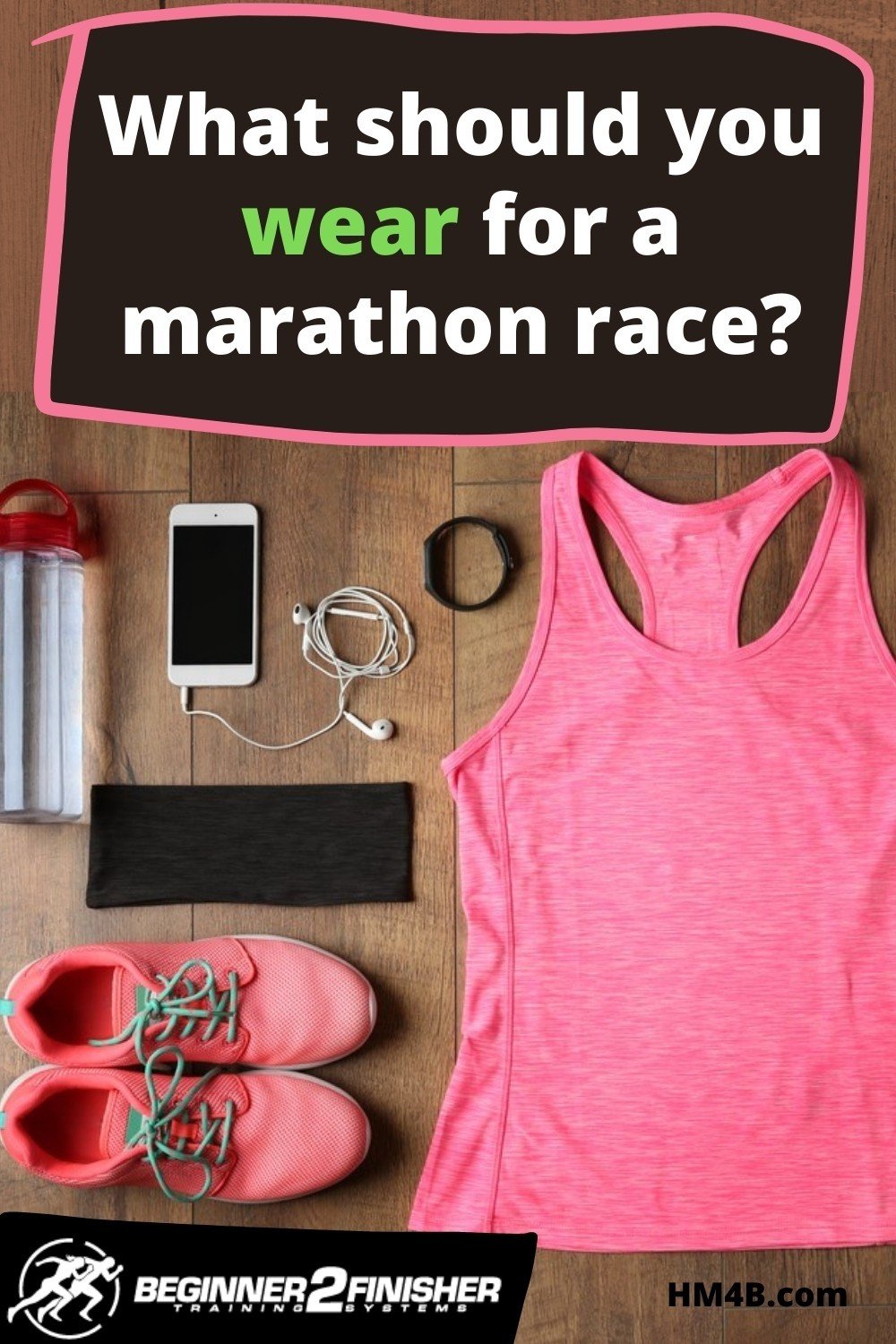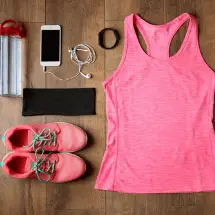When you’re training for a marathon, picking out the right outfit shouldn’t be the first thing on your mind. The answer to the question ‘what do I wear for my marathon race?’ is a complicated one. Finding the right clothing, with a balance between temperature and comfort is key.
Of course, the weather is a big factor to take into account when deciding what to wear. Cold temperature marathons will require more layers to cover your skin whereas hot ones may even mean covering that exposed skin to prevent sunburn.
Overall your clothes should be picked based on what is most comfortable for you. Take this advice as you please, and try out what works best for you personally.
Hot Weather Marathons
Most marathons are performed during the summer months. This means high temperatures and dry air. Making sure your body can regulate its temperature is crucial to running a whole marathon. Getting too hot will make everything far more difficult.
Head
Because the sunlight will be far more present in summer, you might want to consider wearing sunglasses. Oakley makes sunglasses that are designed for sport. Their sunglasses stay put on your head and protect your eyes from harsh rays that are present in sunlight.
Body
Because of high temperatures, your body will need as much help as it can get to expel heat. A perfect core temperature for a human is 98.6 Fahrenheit. Your body is constantly adjusting itself to stay at this temperature.
Wearing a lightweight running shirt is advisable. Lightweight t-shirts can be found that has a breathable material made by leaving space between the fibers as they are woven. A running shirt will feel far lighter on your skin and will let air circulate over it.
Running shirtless is another good way to stay cool. Your body will sweat and that sweat will cool you as the air hits it, lowering the temperature. Sweating is our inbuilt cooling system that is highly effective.
Just remember to ask the race organizers if shirtless running is allowed! You may have to wear a t-shirt so you have something to attach your race number to. Modesty might also be an issue, as some cultures around the world might not like to see you shirtless.
Also, remember to wear enough sun protection. If you don’t you will risk burning your skin. Sunburn is extremely painful and can even lead to skin cancer. If in doubt, add more sunscreen. You could also invest in some UV protective clothing, that blocks the burning part of sunlight.
Related: check out the best mineral-based sunscreens for runners.
Legs
Your legs, like your body, are covered in sweat glands. When you get hot, they will release water that cools the surface of your skin. Your legs are a huge surface area that is great for cooling you down.
Wearing shorts will let your legs ‘breathe’ meaning they get enough cool air to cool the rest of you down. Not only that but most running shorts are ‘2 in 1’ meaning they contain a net inside that mimics underwear.
This inner mesh is typically made of breathable material, meaning air can go up to your shorts and cool down the area underneath your shorts. Every little helps when it comes to cooling down your skin.
Are you having trouble deciding which running shorts to buy? Check my complete guide to buying running shorts.
Cold Weather Marathons
Although most marathons are held in summer, cold weather marathons do exist. Cold weather will mean your body requires extra layers in order to stay at a healthy temperature. This might mean wearing leg tights, gloves, a base layer, or even a combination of all three.
For a detailed post of the dos and don’ts of running in cold weather, check out:
How To Run In Cold Weather – Beginner’s Guide
Head
A lot of runners complain of ear pain when running in cold weather. Your ears are exposed on the side of your head and have little in the way of insulation. You may have seen ears turning bright red in the cold as warm blood is pumped into the area to stop it from freezing.
The same happens on your nose and on your cheeks. Wearing a hat can be the solution to this. Fitness clothing companies make beanie hats that wrap close to your head and will provide warmth without getting too heavy with sweat. They may even make you more aerodynamic.
Scarves and snoods are also useful if you experience a cold neck while running because the area is not normally covered by conventional running clothing. Cold wind and rain can hit your neck and make you feel far colder than you would otherwise.
Body
A normal short sleeve running top might not cut it if you are running in cold weather. Opt for a long sleeve and use the short sleeve one as a base layer. This will keep your torso warm. Your torso is the most important part to keep warm, as it houses all your major organs.
Another option may be to wear a lightweight jacket or rain gilet. These can be found in most running clothing stores and provide protection from the elements with little weight.
Good quality and lightweight rain jacket will protect your clothing from moisture so it can stay warm longer. Any moisture that gets into your clothing will cause it to stay cold. Without the right conditions to evaporate, once you get wet, it is extremely hard to get warm again.
Related: How to Run in the Treacherous Snow and Ice – safely!
Legs
You may know someone who only wears shorts. Even in temperatures below freezing, there they are in basketball shorts and sneakers. If however, you do feel the cold, wearing running tights might be a good option. They hug the skin and add very little weight to you.
Running tights can even be worn underneath shorts if you want to hide that skin-tight outline.
Hands
Your hands are normally the first part of your body to feel the cold. Because our hands and fingers have a lot of surface area and move around a lot, there is just more opportunity for heat to leave them. Wearing a good pair of gloves will help keep your hands warm.
Some gloves are made of a substance called neoprene—the same stuff wetsuits are made of. This substance actually traps water in it which then warms up as your body stays warm. Neoprene gloves are an option if your hands are vulnerable to cold temperatures.
Related: Do you wear underwear under running tights? Will Chafing Occur?
Compression Clothing
Compression clothing is typically worn to both keep you warm and to help with blood flow to certain areas. In fact, compression clothing can stop your muscles from feeling sore the next day. They work by increasing blood flow, and therefore oxygenation, to the compressed area.
By holding the area tight, compression clothing makes blood flow faster through it. Essentially squeezing the blood through a narrower tube. This will mean your muscles will get oxygen faster and will take longer to get sore.
People who are on their feet all day wear compression socks to stop blood and other liquids from pooling at the bottom of their legs. The compression socks work by speeding up the flow of fluid through the compressed area, so their heart won’t need to pump too hard.
Can you wear compression clothing during a marathon?
Compression clothing is typically used in training to prevent too much soreness the next day. You can wear compression clothing during a marathon, but don’t wear it all day. Holding your muscles tight all day is not good for them, as they also need time to relax
How Do you Carry Your Phone While Running?
If going without your phone seems impossible, there are some easy ways to keep it on you while you run.
Arm Strap
Arm straps are available that tie around your bicep and hold your phone. Many have headphone holes so that your headphone (earbud) wires can slip easily into the encasement, as well as a clear screen to control the phone. Simply strap it on and forget about it.
Leggings With A Pocket
Some leggings include a pocket down the side of the leg. You can slide your smartphone into this pocket and rest assured that it won’t go anywhere. Just make sure that the pocket is big enough and that your phone isn’t sliding about. You don’t want to lose your phone on race day.
Hold It
Phones nowadays are very light and discreet. You could just hold onto your phone as you run. Make sure that you can hold it in a way that won’t tire out your arm or hand while running. You’d be surprised at how heavy a phone can feel after running 26.2 miles.
For a more detailed post on where to put your phone while running check out:
Related: 7 Best Ways To Carry Your Phone While You Run
Absolute No-No for marathons
Don’t wear brand new running shoes
Don’t wear brand new running clothes
Final Thoughts
If your marathon is expected to be in hot temperatures, wear light and breathable clothing. If however, the temperature is chilly, remember to find a balance between warm and comfortable. Nothing is worse than setting off and getting too hot within the first 5 minutes.
Before you get to race day, experiment with the clothing you want to wear. It will take a while before you know what works for you and what doesn’t. You may be different from everyone else and not even feel the cold as you run in shorts, or you might need leggings in summer.
Everyone is different and no one outfit will work for everyone. As long as you are comfortable and can run, then just do what works.
| Help support me and subscribe to my YouTube channel. YouTube video - 30 ways to make your runs less painful! Coach Scott's Credentials:
|
To sign up for a FREE half marathon training schedule, log sheet, and pace predictor CLICK HERE.

Recommended gear for runners
Connect with me:
| facebook.com/BeginnerToFinisher/ |
References
https://www.mcdavidusa.com/blogs/posts/top-10-benefits-wearing-compression-shorts-workout#:~:text=Compression%20garments%20are%20designed%20to,during%20short%20bouts%20of%20exercise.
https://www.iffleyroad.com/blogs/journal/what-to-wear-when-youre-running-a-marathon#:~:text=With%20the%20temperature%20being%20unpredictable,bespoke%20drirelease%20fits%20the%20bill.


5 thoughts on “What Should I Wear For My Marathon Race?”